Phlebotomy Essentials
6th Edition
ISBN:9781451194524
Author:Ruth McCall, Cathee M. Tankersley MT(ASCP)
Publisher:Ruth McCall, Cathee M. Tankersley MT(ASCP)
Chapter1: Phlebotomy: Past And Present And The Healthcare Setting
Section: Chapter Questions
Problem 1SRQ
Related questions
Question
What are your recommendations for the improvement of this concept map on caring for a client with Otitis Media?

Transcribed Image Text:LEGEND
Case Scenario
Diagnostic Exams &
Findings
Risk Factors
You meet patient J. B, a two-and-a-half-year-old boy. His parents ask for an antibiotic
prescription right away. J. Bs mom is sure that he has an ear infection.
According to her, the last time he had these symptoms he was diagnosed with
an ear infection.
Nursing Care of Patient with Otitis Media
Surgical
Management
Pathophysiology
J. B's parents tell you that he complains of right ear pain. He has not had any ear discharge.
His symptoms started yesterday afternoon, and this morning his rectal temperature was 38.5°C.
Last week, J. B suffered from a mild upper respiratory tract infection (URTI) which he caught
from daycare. He has not had any diarrhea or vomiting. The only relevant point on past
history is a previous AOM at the age of one which was treated for ten days with an unknown
antibiotic. He has no allergies or craniofacial abnormalities. He is otherwise healthy.
On physical examination, J. B is awake and playful. He has a runny nose with a clear
discharge. His vital signs are within normal limits for his age, except for an oral temperature of
38.3°C. His lungs are clear to auscultation, there are no other abnormal findings on examination.
There is no lymphadenopathy. On otoscopic examination, you see a bulging and erythematous
right tympanic membrane. His left tympanic membrane is normal. J. B is most likely suffering
from acute otitis media.
Signs and
Symptoms
Complication
Medical Conditions
predisposing the
client to ear infections
-Incus
Upper Respiratory
Children (>6 years)
Smoke Exposure
-Malleus
Infections
Medical
Stapes
Condition
Middle
Management
ear
Ear drum
Inflammation of surrounding structures in the
Allergic Reactions in the Upper Respiratory
Tract
-Eustachian
upper respiratory tract
Nursing Diagnosis
Nursing Interventions
e Re tube
Pathogens in nasopharynx
secretions ascend to the
Eustachian Tube
Bullous formation
Thickening
Otitis media
-Inflammation
and fluid
Pathogens (Bacterial or Viral)
enters the Eustacian Tube)
Te ent
Pull ear
up & back
ONTIS MEDIA a typically caused
by en ollergic reacten
a viral fedien er e bodelel ideten
Obstruction of the Eustachian
Tube
Middle ear effusion
Perforation
Eustachian Tube Dysfunction
Merele catahal
Erythematic, Bulging
Tympanic Membrane
Tympanic Membrane
Perforation
Streptecoce preunnice
Antibiotic Therapy
Eardrum
Pull ear
down & back
Infoned
erdrum
Pathogens enter the Middle
Ear
Myringotomy
Normel midle e
Midde ear iletion
IOnIS MEDIA
Antibiotic Otic
How to Instill Ear Drops in Children
How to Instill Ear Drops in Adults
Eutachian tube
Hoenephlus iluene
Preparation
Nursesiabe
Otoscopy
Conductive Hearing
Systemic Symptoms
Otorrhea
Otalgia
Aural Tenderness
No evidence of Active Infection
Loss
Independent
ACUTE OTITIS MEDIA
• Assess the parent's current knowledge on the condition, the risks of
exposing the infant/child to passive smoking, feeding activities witl
the infant, and exposure to illness.
• Explain possible causes of OM: exposure to illness of others,
irritation from environmental smoke, or formula entering the
eustachian tube when the infant is fed in a supine position.
• Provide privacy for discussion, promote trust, remain
nonjudgmental, and support parents.
• Teach parents (and child if age- appropriate) about OM using an
ear model for demonstration. Ask parents to verbalize their
understanding of teaching.
Brain Abscess
Serous Otitis Media
Permanent Hearing
Acute Otitis Media
Los
Nursing Priority #3 Diagnosis
Deficient Knowledge r/t Lack of Information
RISK FACTORS
Meningitis
Popping and
Crackling Noises
Sensation of
Eustachian Tube
Hearing Loss
Fullness in the Ear
Congestion
attempts to Open
o
Otoscopy
Recurrent
NORMAL EAR
Corticosteroids
Valsalva Maneuver
Irreversible Tisue
Pathology
Independent
Myringotomy
Tympanic Membrane
Damaged
Ossicles Destroyed
Mastoid Affected
• Assess client's description and frequency of pain; Use a pain rating
scale, Observe if the infant is tugging or rubbing an ear.
• Monitor and record vital signs closely.
Encourage and assist the parent to hold and comfort the client.
• Encourage the mother to provide and offer liquid to soft foods.
Nursing Priority #1 Diagnosis
Nursing Priority # 3 Diagnosis:
Disturbed Sensory Perception r/t Inflammation and
Acute Pain r/t
Presence of
Otorrhea (Foul-
CLASSIFICATION OF ACUTE
OTTTIS MEDIA
Acute Mastoiditis
Inflammation and Increase Pressure in the
Perforation
Pain
Hearing Loss
smelling)
Edema of Middle Ear
Dependent
Middle Ear
Type !
• Administer pain medication such as acetaminophen or ibuprofen as
prescribed.
Systemic Antibiotic
Agents
Application of
Antibiotic Drops
Chronic Otitis Media
Otoscopic Guidance Suctioning of the Ear
Antibiotic Powder
Independent
• Assess client's hearing ability. Ask an older child to
describe hearing loss (e.g., Is my hearing muffled
in one ear? or is there an absence of sound in the
affected ear?).
• Provide information about the condition and
Tymnoplasty
Type II
Otoscopy
Ossiculoplasty
Chronic Mastoiditis
Eardrum
Тympanic
cavity
Mastoidectomy
answer any inquiries. Reassure parents and child
that hearing loss is not permanent and will resolve
with treatment.
• Reduce unnecessary environmental noise.
• Encourage parents
voice and look at the child when talking.
Cholesteatoma
Туре I
Туре IV
Type V
speak in a loud and clear
Cholesteatoma
Dependent
Enlarges
Tympanostomy tube
inserted into the eardrum
Eustachian
• Administer pain medication such as
acetaminophen or ibuprofen as prescribed.
tube
Damage to
Surrounding
Horizontal Canal
Facial Nerve Damage
Damage
Structures
MedicineNet © 2019
Expert Solution
This question has been solved!
Explore an expertly crafted, step-by-step solution for a thorough understanding of key concepts.
Step by step
Solved in 2 steps

Recommended textbooks for you
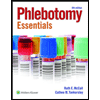
Phlebotomy Essentials
Nursing
ISBN:
9781451194524
Author:
Ruth McCall, Cathee M. Tankersley MT(ASCP)
Publisher:
JONES+BARTLETT PUBLISHERS, INC.
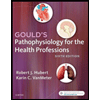
Gould's Pathophysiology for the Health Profession…
Nursing
ISBN:
9780323414425
Author:
Robert J Hubert BS
Publisher:
Saunders
Fundamentals Of Nursing
Nursing
ISBN:
9781496362179
Author:
Taylor, Carol (carol R.), LYNN, Pamela (pamela Barbara), Bartlett, Jennifer L.
Publisher:
Wolters Kluwer,

Phlebotomy Essentials
Nursing
ISBN:
9781451194524
Author:
Ruth McCall, Cathee M. Tankersley MT(ASCP)
Publisher:
JONES+BARTLETT PUBLISHERS, INC.

Gould's Pathophysiology for the Health Profession…
Nursing
ISBN:
9780323414425
Author:
Robert J Hubert BS
Publisher:
Saunders

Fundamentals Of Nursing
Nursing
ISBN:
9781496362179
Author:
Taylor, Carol (carol R.), LYNN, Pamela (pamela Barbara), Bartlett, Jennifer L.
Publisher:
Wolters Kluwer,
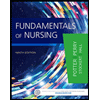
Fundamentals of Nursing, 9e
Nursing
ISBN:
9780323327404
Author:
Patricia A. Potter RN MSN PhD FAAN, Anne Griffin Perry RN EdD FAAN, Patricia Stockert RN BSN MS PhD, Amy Hall RN BSN MS PhD CNE
Publisher:
Elsevier Science
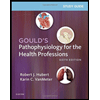
Study Guide for Gould's Pathophysiology for the H…
Nursing
ISBN:
9780323414142
Author:
Hubert BS, Robert J; VanMeter PhD, Karin C.
Publisher:
Saunders

Issues and Ethics in the Helping Professions (Min…
Nursing
ISBN:
9781337406291
Author:
Gerald Corey, Marianne Schneider Corey, Cindy Corey
Publisher:
Cengage Learning